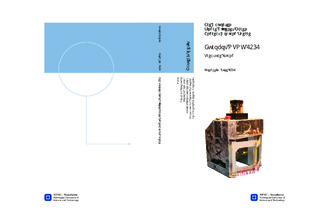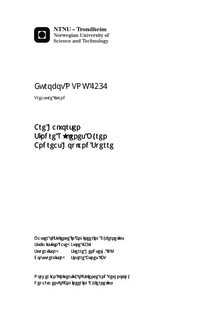| dc.contributor.advisor | Hendseth, Sverre | nb_NO |
| dc.contributor.advisor | Aunet, Snorre | nb_NO |
| dc.contributor.author | Halvorsen, Are | nb_NO |
| dc.contributor.author | Myren, Sindre Røkenes | nb_NO |
| dc.contributor.author | Sperre, Andreas Hopland | nb_NO |
| dc.date.accessioned | 2014-12-19T14:06:20Z | |
| dc.date.available | 2014-12-19T14:06:20Z | |
| dc.date.created | 2012-11-08 | nb_NO |
| dc.date.issued | 2012 | nb_NO |
| dc.identifier | 566470 | nb_NO |
| dc.identifier | ntnudaim:7109 | nb_NO |
| dc.identifier.uri | http://hdl.handle.net/11250/260734 | |
| dc.description.abstract | Eurobot is an annual competition for autonomous robots. Typically two teams compete against each other for 90 seconds on a 2x3m playing area. The main goal is to collect as many points as possible. There are several matches to determine which robot is the best. The rules are different every year. An autonomous robot for this year's competition was designed and built. The rules for Eurobot 2012 were studied and a design concept was created. In order to implement the design a series of technical pieces of work was carried out. The tasks involved several fields of study including engineering cybernetics, electrical engineering, computer science and mechanical engineering. A laser-tower positioning system from 2010 was further developed and improved. In addition the robots drive wheels hall-sensors were used to compensate for the robots movement. An extended Kalman filter was created to transform these measurements into a position and orientation estimate. Two PID regulators were used to maneuver the robot, one regulator controlling the rotation, the other translation. A circuit board following the EPIC-plus standard with several efficient power supplies, a micro controller and a circuit board stack was designed, produced and tested. This circuit board was driven by a lithium battery and acted as a power supply for-, and took care of low level interaction with, all motors, servos and actuators on the robot. Firmware was implemented on the circuit board that provided an interface to control all hardware via CAN-bus to a tablet PC. To implement strategic choices, algorithms and artificial intelligence, an elaborate software system was created. The high-level programing was done in Go, a new and exciting programing language from Google. A featured Debug-GUI that presented real-time information and allowed for robot interaction was provided. A strong focus on design and a test driven development, resulted in robust and stable software. A mechanical design of the robot was created in collaboration with a group of students through the course TTK4850 ``Experts in team'' at NTNU. This work lead to a complete robot with a clean implementation hosting advanced technical solutions. The final software allowed strategies to be reprogrammed before each match, and the physical robot was easily maintainable. The positioning system can move the robot to any coordinate on the playing area. In the Eurobot 2012 competition, the robot won three out of five matches and ended at 23rd place out of 43 international teams. | nb_NO |
| dc.language | eng | nb_NO |
| dc.publisher | Institutt for teknisk kybernetikk | nb_NO |
| dc.subject | ntnudaim:7109 | no_NO |
| dc.subject | MTEL elektronikk | no_NO |
| dc.subject | Design av digitale systemer | no_NO |
| dc.subject | MTTK teknisk kybernetikk | no_NO |
| dc.subject | Sanntidssystemer | no_NO |
| dc.title | Eurobot NTNU 2012: Treasure Island | nb_NO |
| dc.type | Master thesis | nb_NO |
| dc.source.pagenumber | 209 | nb_NO |
| dc.contributor.department | Norges teknisk-naturvitenskapelige universitet, Fakultet for informasjonsteknologi, matematikk og elektroteknikk, Institutt for elektronikk og telekommunikasjon | nb_NO |
| dc.contributor.department | Norges teknisk-naturvitenskapelige universitet, Fakultet for informasjonsteknologi, matematikk og elektroteknikk, Institutt for teknisk kybernetikk | nb_NO |

